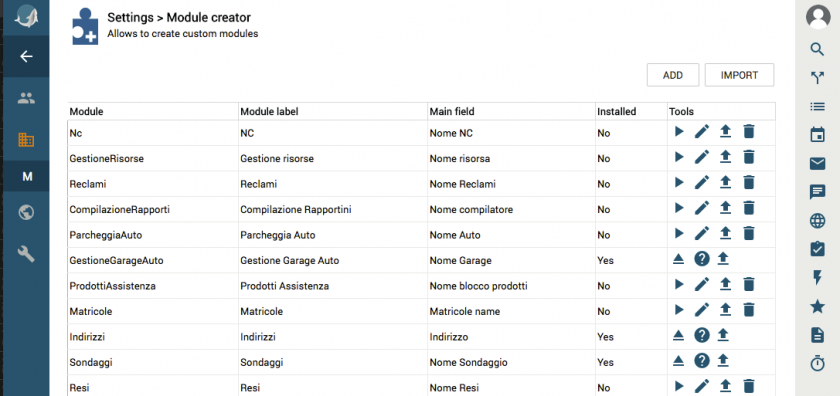17.6.1 Create new module
STEP 1: Module information
The explanation of the individual entries can be found next to the fields to be filled in. Other labels are automatically proposed by typing the name for the new module.
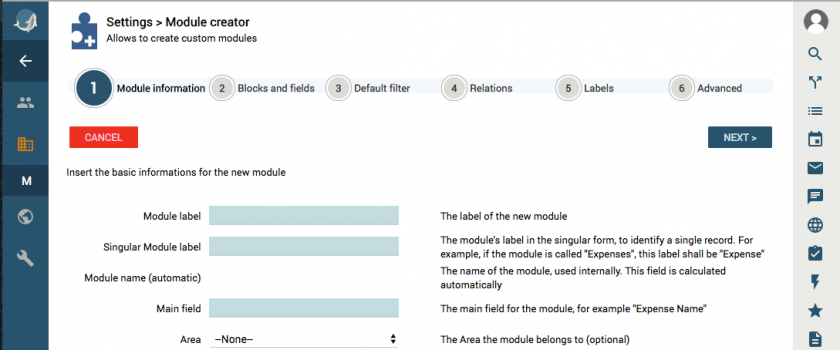
STEP 2: Blocks and fields
Some of the functions of the Layout Editor (those for creating and moving fields) allow you to fill in the module with the necessary content. Here, however, it is also possible to add relationship fields with other modules via the icon.
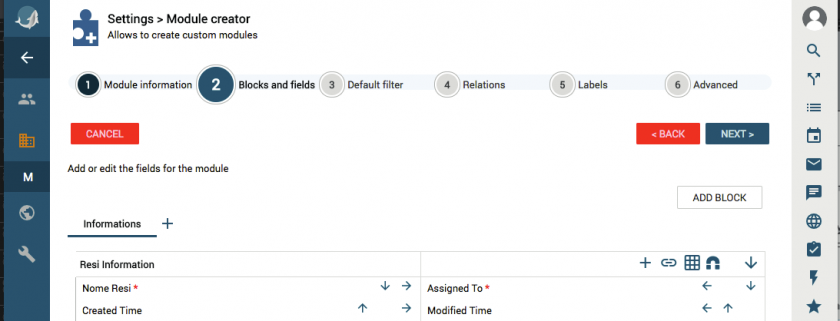
The relationship field allows you to hook a record of the chosen module. In the example, our return can be linked to a sales order in the system; the type of relationship is N to 1 (the return is linked to 1 order only; the order can be linked to several returns).
The result in the returns module will be as follows:
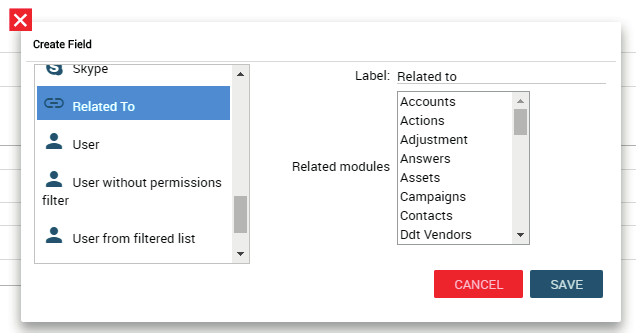
STEP 3: Default filter
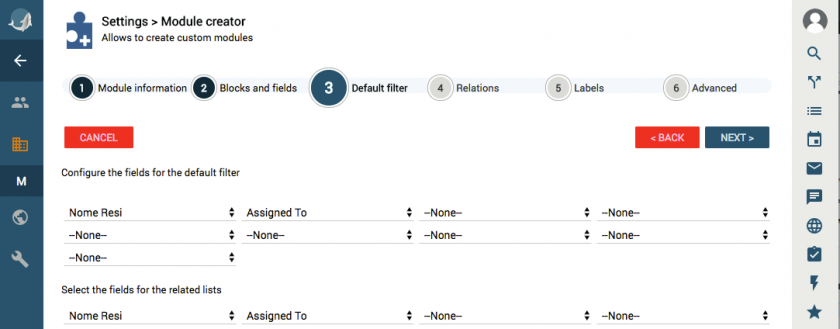
In the first part, you can set the display of the "All" filter by choosing the columns that most interest you (similar to when you create a new Filter on a module).
In the second part, you can choose the Returns columns that will be displayed by a linked module.
The result will be as follows:

STEP 4: Relations
You will be shown the default present relations and those of type N to 1 created in the previous step. By clicking Add, you can create N to N type relations, i.e. through the relations menu. In our example, we want each return to be related to one or more suppliers, and vice versa. You can also add other N to 1 relations.
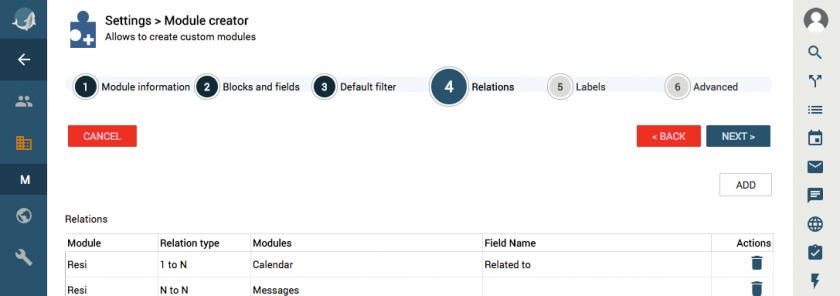
The result will be as follows:

STEP 5: Labels
At this point you can translate all the module labels into the other languages installed in vtenext. If no changes are made, the new module will always appear in the language in which you are creating it (in our example, English).
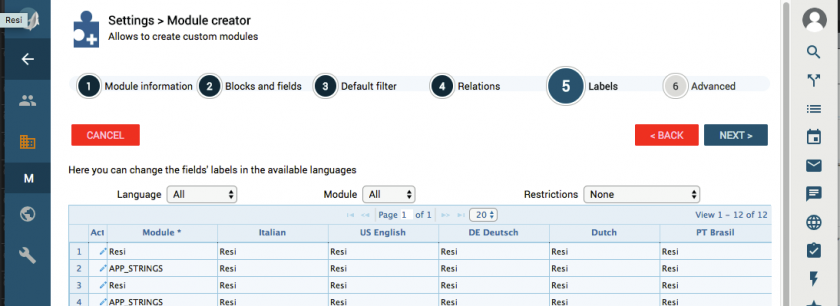
STEP 6: Advanced
Before launching the new module, you can define its main sharing privileges.
|
Shared Access |
Private or public in various ways; see Sharing Access chapter |
|
Enable Quick creation |
Makes the form available for Quick Creation, in the menu of the bar on the right |
|
Enable Import |
Allows data to be imported from an external source (CSV file) into the module |
|
Enable Export |
Allows you to export module data to CSV files |
|
Enable Duplicate Management |
Allows verification of duplicate data within the module |
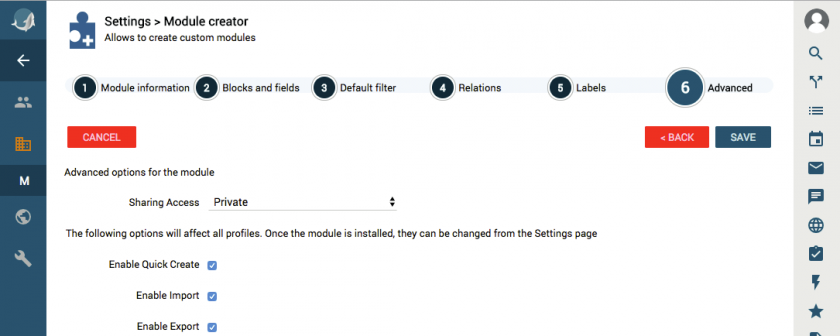
INSTALL
Once the creation procedure is complete, your new module appears on the home screen accompanied by a series of icons. The module is not yet active: after creating it you need to install it so that it appears in the vtenext modules menu and can be used to interact with others.
To activate the module, press the Play icon 
The system will process the operation in a few moments.
